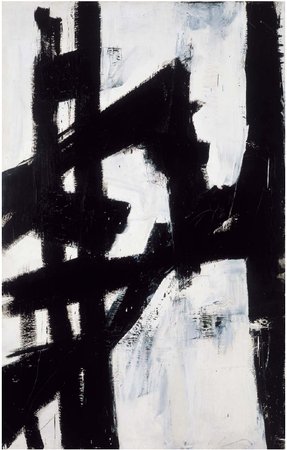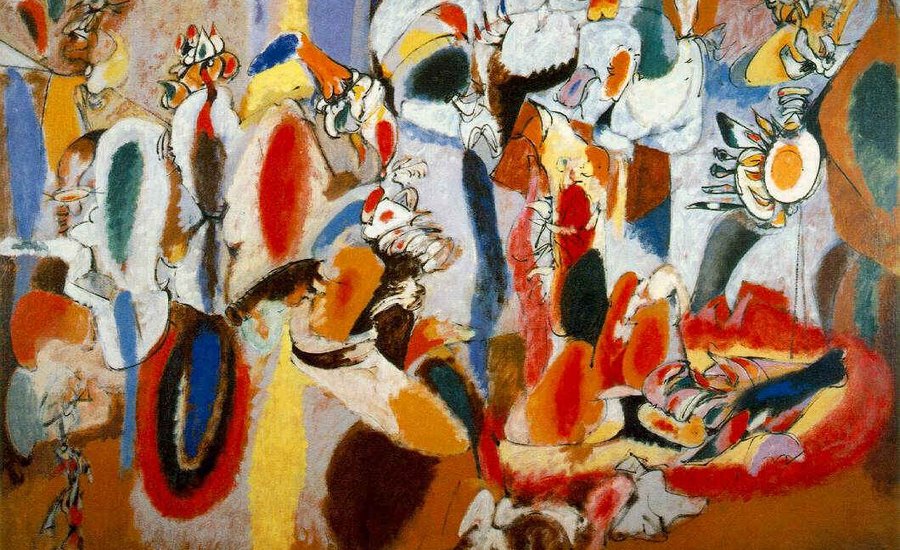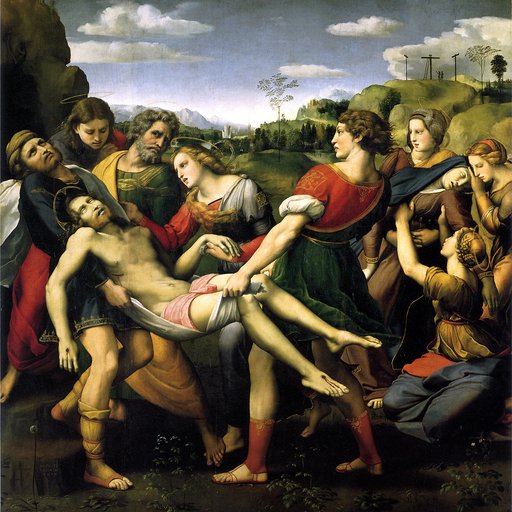You don’t need to be an art insider to hear the term “Abstract Expressionists” used to describe the inspiration behind all manner of contemporary painting, but what was the original movement all about? Hint: it’s more than just Jackson Pollock drinking and tossing paint on a canvas. In this brief essay fromPhaidon’sArt in Time: A World History of Styles and Movements, we learn about the historical developments and key artists that paved away for this highly influential American painting style.
In the 1940s and 1950s, the United States made its first major contribution to the international art world with a painting style that would fundamentally change twentieth-century art. In a New World translation of ideas from European modernism, the Abstract Expressionists combined the flatness and geometry of Cubism, German Expressionist gesture and color, and Surrealist spontaneity and improvisation into their often mural-sized canvases.
 Willem de Kooning's Woman I, 1950-52
Willem de Kooning's Woman I, 1950-52
New York City was fertile ground for the beginnings of the style in the late 1930s. European artists were fleeing Europe to escape the predations of Fascism and found themselves working alongside exiles from the Great Depression. The classic modern artworks that could be viewed at the Museum of Modern Art, founded in 1929, and the Guggenheim Foundation’s Museum for Non-Objective Painting, which opened in 1939, had a deep impact.
 Franz Kline's New York, N.Y., 1953
Franz Kline's New York, N.Y., 1953
MoMA exhibited Picasso’s mural-sized Guernica (1937) in 1939, and in the same year the inaugural exhibition of works from the collection of Solomon R. Guggenheim included mainly the pure abstraction of the expressionist Wassily Kandinsky. Mexican muralist Diego Rivera visited the city and introduced New York artists to unprecedented scale, and German émigré and painter Hans Hofmann (1880–1966) became the leading teacher and theorist for the burgeoning movement. Hofmann’s belief that the artist should explore the possibilities of the medium rather than focus on subject matter formed the basis of art critic Clement Greenberg’s influential defense of Abstract Expressionism.
 Barnett Newman's Onement I, 1948
Barnett Newman's Onement I, 1948
The Abstract Expressionists, sometimes called the New York School, were never a formal association, but they shared a desire to break away from conventional subjects and techniques and, significantly, to produce a completely abstract art that reflected in dynamic, gestural form the unique personality, psyche and emotions of the artist. Painters including Jackson Pollock (1912– 56), Willem de Kooning (1904–97), Franz Kline (1910–62), Robert Motherwell (1915–91), Mark Rothko (1903–70), Barnett Newman (1905–70), Adolph Gottlieb (1903–74), Richard Pousette-Dart (1916–92), Clyfford Still (1904–80) and Lee Krasner (1908–84) saw the individual process of art-making as equal to or more important than the final result, and art critic Harold Rosenberg coined the phrase “action painting” to refer to this overriding significance of the act of painting.
 Jackson Pollock, Autumn Rhythm (Number 30), 1950
Jackson Pollock, Autumn Rhythm (Number 30), 1950
Jackson Pollock became a household name in 1949 when Life magazine published an article featuring photographs of him in action as he created his drip paintings. Franz Kline’s bold and monumental black and white gestures captured the dynamism of New York’s changing landscape. Willem de Kooning caused controversy with his monstrous “Woman” series, for despite his active mark-making, figurative work had been taboo since the ascendency of pure abstraction.
 Mark Rothko's No. 6 (Violet, Green, and Red), 1951
Mark Rothko's No. 6 (Violet, Green, and Red), 1951
Barnett Newman painted large expanses of color punctuated by a series of vertical “zips.” Mark Rothko generally worked within a format of two or three horizontal rectangles within a larger vertical support. Both artists experimented with the emotional, even spiritual power of color and invited slow, contemplative looking. In Rothko’s words: “The people who weep before my pictures are having the same religious experience I had when I painted them. And if you… are only moved by their color relationships, then you miss the point!”























